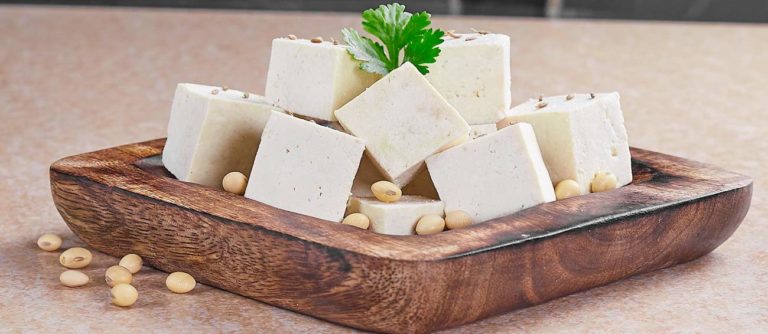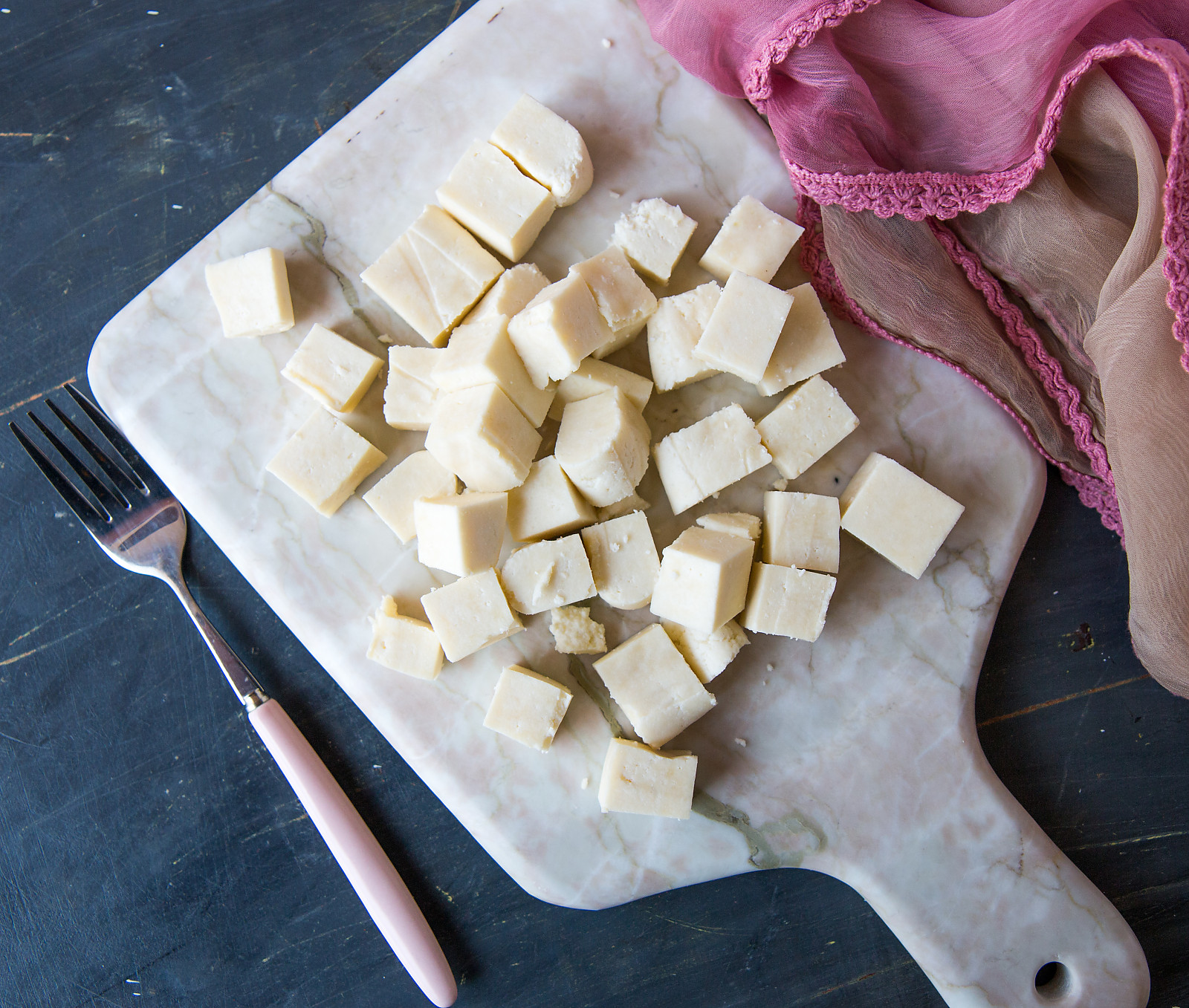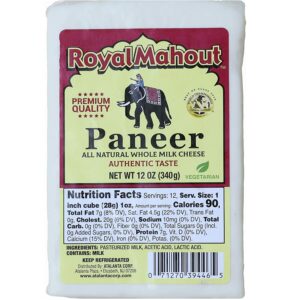
Everyone loves paneer because of its cheesy, creamy flavour. Any party or wedding meal in India would be considered blasphemous if it didn’t include paneer dishes! The most OK vegetarian dish is unquestionably paneer. Curdling milk with food-derived acid, such as lemon, sour curd, vinegar, or citric acid, is the process of making paneer. Using muslin fabric, the curd is separated from the whey. The slabs we purchase are made by pressing the material under a lot of weight. Many accounts were brought paneer to India by Iranian, Afghan, and Portuguese conquerors and immigrants. However, the origin of this softly flavoured, non-fermented, and non-melting farmers’ cheese is now a vital part of our cuisine regardless of who brought it to India.

Contents
Paneer Nutrition Facts Chart
Below are the calorie counts which will clear the doubts regarding paneer nutrition facts if you have any.
- Protein – 7.54gm
- Fat – 5.88gm
- Carbs – 4.96gm
- Energy – 103.15Kcal
- Folates – 37.32microgram
- Calcium – 190.4mg
- Phosphorus – 132mg
- Sat Fat- 3540.4mg
- MUFA- 1720mg
You can get the detailed chart for paneer nutrition facts for better reference.
7 Paneer Nutrition Facts Which Will Surprise You!
- A wide variety of health advantages may be gained by eating paneer, one of the most nutritious meals. Delicious paneer may be prepared in a variety of ways. It is a fantastic pre-workout snack for individuals who go to the gym or run. In 100 grams of paneer, you get 19 grams of protein, which is enough to meet most of your daily protein needs. You must, however, be aware of the appropriate protein intake for your weight and lifestyle. Paneer nutrition is necessary to ensure that your diet has enough protein.
- A protein-rich paneer is a fantastic option, particularly for vegetarians. There are nine necessary amino acids in a protein, so it has a biological value of 80-86 percent. Aside from being required for cellular structure, proteins also play a crucial role in sustaining development, mending tissues, boosting our immune systems, and regulating blood volume. Proteins are scarce in Indian diets, which are primarily cereal-based. Instead of dals, paneer may make as a snack or even eaten raw. Consuming it is a cinch because of its lack of flavour, making it simple to flavour and match with practically any food.
- About 20% of the paneer is made up of fasting, saturated fat. Monounsaturated fatty acids are also present (MUFA). Low levels of LDL (bad cholesterol) are linked to MUFA consumption. Paneer’s major MUFA, oleic acid, has been linked to decreasing blood pressure. Alpha-linoleic acid, an omega-3 polyunsaturated fatty acid linked with a modest reduction in the risk of cardiovascular disease, is found in paneer. Portion management is critical due to a large number of saturated fats.
- With the Indian diet already rich in carbohydrates, it’s hard to find a substitute for meals that don’t include carbohydrates.
- Conjugated Linoleic acid, a PUFA fat found in paneer, has been linked to an increase in the rate of fat burning in human bodies. As a result, dieters trying to lose weight should include one serving of paneer in each meal.
- Packed full of calcium and phosphorus, paneer is an excellent source of these nutrients vital to our musculoskeletal health. If you can obtain both calcium and phosphorus from the same diet, it’s a win-win situation for your bones and health. Our heart muscles and neurons need calcium to operate correctly. Every cell in our body contains phosphorus, essential for energy production, acid-base equilibrium, and development.
- Diabetics may eat paneer as a nutritious meal option. Because it’s high in protein and low in carbohydrates, this is ideal for reducing post-meal sugar spikes.
Some Additional Paneer Nutrition Facts Which You Need To As Well
- To make paneer without rennet, heated milk is boiled and curdled with citrus juices like lemon or lime, vinegar, yogurt, or citric acid. Despite its firmness, paneer cubes should not be challenging, and you should assess a paneer dish on how soft and fluffy the cheese is.
- When using paneer, it is not necessarily sliced into cubes and fried. It may be eaten fresh, crumbled, moulded, and sometimes with cumin or mint flavouring.
- The greatest paneer is homemade — it’s fast and straightforward to make, and you’ll notice the difference. However, if you must get the premade rubbery version, soak it in hot water before using it. The softer it becomes, the longer you let it flow.
- Cottage cheese is an excellent source of calcium, and it’s easy to make. Cottage cheese, according to nutritionists, provides 8% of the required daily intake. There is a massive 83 grams of protein in 100 grams of cottage cheese! Healthy bones, teeth, heart muscle, and smooth nerve activity depend on adequate calcium levels.
- Cottage cheese may also aid in regulating blood sugar levels, according to the American Diabetes Association. Cottage cheese is an excellent source of magnesium, which may help keep blood pressure and heart health in control and boost the immune system. Helps avoid a sudden rise and fall in blood sugar levels due to paneer’s high protein content and delayed release of sugar.
- Cottage cheese may also improve your cardiovascular health. Paneer includes potassium, a mineral long been recognized for regulating the body’s fluid balance. By holding the quantity of fluid your body retains, your kidneys help keep your blood pressure in check. Said, the more fluid in an area, the greater the pressure will be. As well as regulating fluid balance, potassium counteracts the adverse effects of excessive salt intake. However, the paneer must not be too salted.
- Cottage cheese has a lot of salt, which might harm your heart health. Sodium and potassium are both electrolytes. However, potassium is better at balancing fluids since it doesn’t negatively affect sodium use.
- Your favourite paneer should be had one hour before going to bed. It may be consumed throughout the day, but only in tiny doses—however, a cautionary tale. Before or after an exercise, never drink it.
Summary
And that’s a wrap on our exploration of the nutrition facts of paneer. We hope you found this information useful and informative. If you have any questions or feedback, please don’t hesitate to reach out. Stay healthy and enjoy the delicious taste of paneer in your meals
